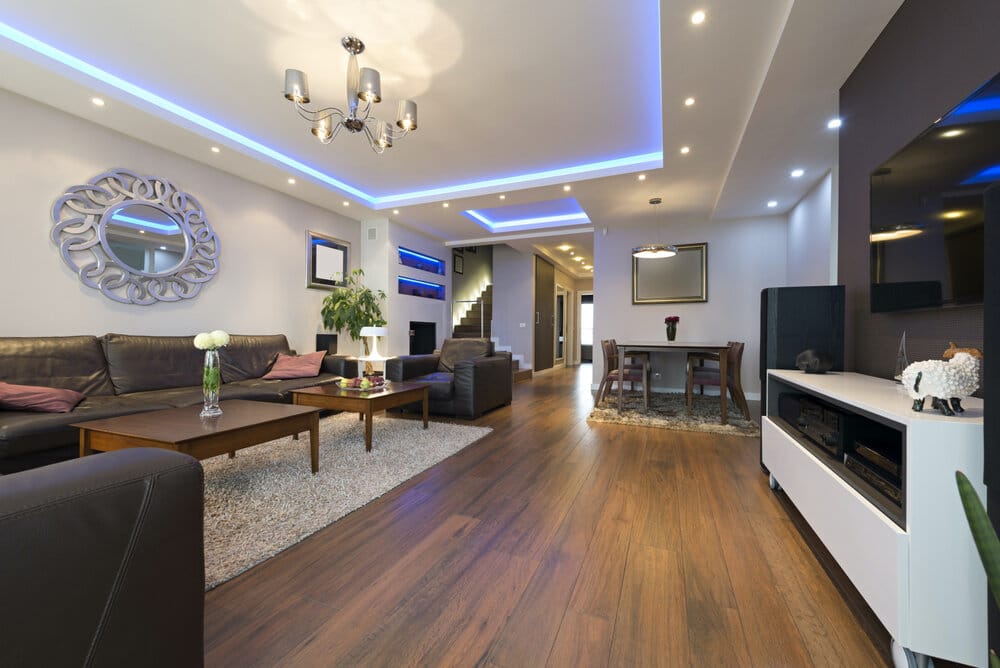Your home’s lighting accounts for roughly 10% of your electricity bill, but with thoughtful residential lighting design, you can slash that number significantly. Modern lighting solutions offer homeowners the chance to create beautiful, functional spaces while reducing energy consumption by up to 75%.
The key lies in understanding which lighting technologies work best for your lifestyle and implementing strategic design choices throughout your home. Small changes in how you approach lighting can lead to substantial savings on your monthly energy costs.
LED Lighting: The Foundation of Efficient Design
Switching to LED bulbs represents the single most impactful change you can make in your residential lighting design strategy. These bulbs use 75% less energy than traditional incandescent bulbs and last 25 times longer.
Unlike compact fluorescent bulbs, LEDs reach full brightness instantly and work well in cold temperatures. They also produce less heat, which means your air conditioning system works less during warmer months. While LEDs cost more upfront, the average household saves $225 annually on energy costs after making the switch.
When selecting LEDs, pay attention to lumens rather than watts. A 60-watt incandescent bulb produces about 800 lumens, but an LED can achieve the same brightness using only 9-12 watts.
Smart Lighting Controls for Automatic Savings
Smart lighting controls take energy efficiency beyond simply changing bulbs. These systems automatically adjust lighting based on occupancy, time of day, and available natural light.
Motion sensors ensure lights only operate when rooms are occupied, while programmable timers can gradually dim lights as bedtime approaches. Daylight sensors detect available natural light and adjust artificial lighting accordingly, preventing unnecessary energy use during bright days.
Smart switches and dimmers allow you to customize lighting levels for different activities. Reading requires more light than watching television, and dimming lights by just 25% can reduce energy consumption by 20%.
Natural Light Optimization Strategies
Maximizing natural light reduces your reliance on artificial lighting during daylight hours. Strategic placement of mirrors can reflect sunlight deeper into rooms, effectively doubling the light from windows.
Light-colored walls and ceilings reflect more natural light than dark surfaces. Painting walls in whites, creams, or pale colors can increase room brightness by up to 60% without adding a single bulb.
Consider your window treatments carefully. Sheer curtains or adjustable blinds allow you to control light levels throughout the day while maintaining privacy. Position work areas near windows whenever possible to take advantage of free daylight.
Room-Specific Lighting Recommendations
Different rooms require different approaches to energy-efficient residential lighting design. Kitchens benefit from task lighting under cabinets, which provides focused illumination for cooking while using less energy than overhead lights.
In bedrooms, bedside reading lamps consume less energy than ceiling fixtures when you only need localized lighting. Living rooms work well with layered lighting approaches—combining ambient, task, and accent lighting allows you to use only what you need for specific activities.
Bathrooms present unique opportunities for efficiency gains. Installing lights on timers prevents family members from accidentally leaving lights on, while LED vanity lighting provides excellent color rendering for grooming tasks.
Consider installing separate switches for different light zones in larger rooms. This allows you to illuminate only the areas you’re using rather than lighting entire spaces unnecessarily.
Start Saving Today
Effective residential lighting design doesn’t require a complete home renovation. Begin with high-use areas like kitchens and living rooms, where lighting upgrades will have the most immediate impact on your energy bills.
Replace your most frequently used bulbs with LEDs first, then gradually upgrade the rest of your home. Add smart controls to rooms where lights are often left on accidentally, and experiment with natural light optimization techniques.
These changes will not only reduce your environmental footprint but also create more comfortable, functional living spaces. Your wallet will thank you every month when you see lower energy bills, and you’ll enjoy better quality lighting throughout your home.

